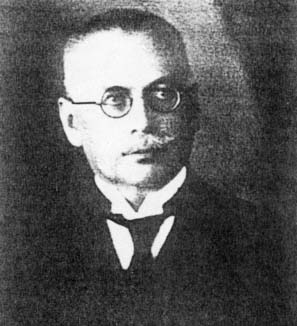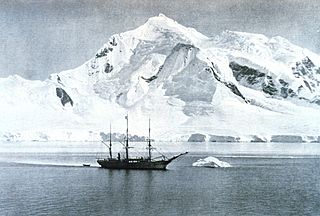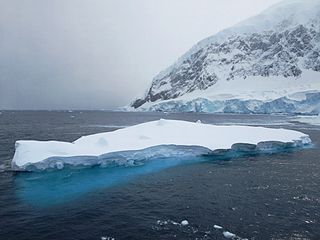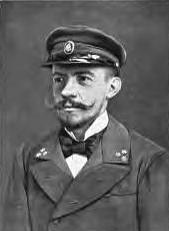Related Research Articles

Ladislaus Josephovich Bortkiewicz was a Russian economist and statistician of Polish ancestry. He wrote a book showing how the Poisson distribution, a discrete probability distribution, can be useful in applied statistics, and he made contributions to mathematical economics. He lived most of his professional life in Germany, where he taught at Strassburg University and Berlin University (1901–1931).
The year 1899 in science involved some significant events, listed below.
The year 1912 in science and technology involved some significant events, listed below.
The year 1840 in science and technology involved some significant events, listed below.
The year 1813 in science and technology involved some significant events, listed below.
The year 1845 in science and technology involved some significant events, listed below.

Baron Adrien Victor Joseph de Gerlache de Gomery was a Belgian officer in the Belgian Royal Navy who led the Belgian Antarctic Expedition of 1897–99.

The Belgian Antarctic Expedition of 1897–1899 was the first expedition to winter in the Antarctic region. Led by Adrien de Gerlache de Gomery aboard the RV Belgica, it was the first Belgian Antarctic expedition and is considered the first expedition of the Heroic Age of Antarctic Exploration. Among its members were Frederick Cook and Roald Amundsen, explorers who would later attempt the respective conquests of the North and South Poles.

Palmer Archipelago, also known as Antarctic Archipelago, Archipiélago Palmer, Antarktiske Arkipel or Palmer Inseln, is a group of islands off the northwestern coast of the Antarctic Peninsula. It extends from Tower Island in the north to Anvers Island in the south. It is separated by the Gerlache and Bismarck straits from the Antarctic Peninsula and Wilhelm Archipelago, respectively. The archipelago is in the British, Chilean, and Argentine Claims.

Gerlache Strait or de Gerlache Strait or Détroit de la Belgica is a channel/strait separating the Palmer Archipelago from the Antarctic Peninsula. The Belgian Antarctic Expedition, under Lt. Adrien de Gerlache, explored the strait in January and February 1898, naming it for the expedition ship Belgica. The name was later changed to honor the commander himself.

Rongé Island is a high, rugged island 5 nautical miles long, the largest island of the group which forms the west side of Errera Channel, off the west coast of Graham Land in Antarctica.

The Arctowski Peninsula is a peninsula, 15 nautical miles long in a north-south direction, lying between Andvord Bay and Wilhelmina Bay on the west coast of Graham Land, Antarctica.

Flandres Bay is a large bay lying between Cape Renard and Cape Willems, along the west coast of Graham Land, Antarctica.

The Danco Coast is the portion of the west coast of the Antarctic Peninsula between Cape Sterneck and Cape Renard. This coast was explored in January and February 1898 by the Belgian Antarctic Expedition under Adrien de Gerlache, who named it for Lieutenant Emile Danco who died on the expedition.

Andvord Bay is a bay, 9 nautical miles long and 3 nautical miles wide, which lies between Beneden Head and Duthiers Point along the west coast of Graham Land, Antarctica.

Belgica was a barque-rigged steamship that was built in 1884 by Christian Brinch Jørgensen at Svelvik, Norway as the whaler Patria. In 1896, she was purchased by Adrien de Gerlache for conversion to a research ship, taking part in the Belgian Antarctic Expedition of 1897–1901, becoming the first ship to overwinter in the Antarctic. In 1902, she was sold to Philippe, Duke of Orléans and used on expeditions to the Arctic in 1905 and from 1907 to 1909.

Lemaire Island is an island 4.5 nautical miles long and 1.5 nautical miles wide, lying 1 nautical mile west of Duthiers Point off the west coast of Graham Land, Antarctica.
Bryde Island is an island 6 nautical miles long and 3 nautical miles wide, lying immediately southwest of Lemaire Island, off the west coast of Graham Land, Antarctica.

Georges Lecointe was a Belgian naval officer and scientist. He was captain of the Belgica and second-in-command of the Belgian Antarctic Expedition, the first to overwinter in Antarctica. After his return to Belgium he was the founder of the International Polar Organization and deeply involved in the foundation of the International Research Council and the International Astronomical Union.
References
- ↑ "Ten Thousandth Near-Earth Object Unearthed in Space". NASA JPL. 24 June 2013. Retrieved 28 June 2013.
- ↑ "Near Earth Asteroids (NEAs), A Chronology of Milestones" . Retrieved 14 August 2013.
- ↑ Binder, A. B. (1974). "On the origin of the Moon by rotational fission". The Moon. 11 (2): 53–76. Bibcode:1974Moon...11...53B. doi:10.1007/BF01877794.
- ↑ Ramsay, William; Travers, Morris W. (1898). "On the Companions of Argon". Proceedings of the Royal Society . 63 (1). London: 437–440. doi:10.1098/rspl.1898.0057.
- ↑ Emsley, John (2001). Nature's Building Blocks: an A–Z Guide to the Elements . Oxford University Press. ISBN 0-19-850340-7.
- ↑ Humphrey, A. J.; O'Hagan, D. (2001). "Tropane alkaloid biosynthesis: a century old problem unresolved". Natural Product Reports. 18 (5): 494–502. doi:10.1039/b001713m. PMID 11699882. S2CID 228936.
- ↑ Yelverton, David E. (2004). "The Belgian Antarctic Expedition 1897–1899". Quest for a Phantom Strait: the Saga of the Pioneer Antarctic Peninsula Expeditions 1897–1905. Burpham: Polar Publishing. ISBN 0-9548003-0-3.
- ↑ von Bortkiewicz, Ladislaus (1898). Das Gesetz der kleinen Zahlen. Leipzig, Germany: B.G. Teubner. On page 1, Bortkiewicz presents the Poisson distribution. On pages 23-25, Bortkiewicz presents his famous analysis of "4. Beispiel: Die durch Schlag eines Pferdes im preussischen Heere Getöteten." (4. Example: Those killed in the Prussian army by a horse's kick.). On pages 17–20 Bortkiewicz presents his analysis of "1. Beispiel: Die Selbstmorde von Kindern in Preussen." (1. Example: Suicides of children in Prussia.). Bortkiewicz's book is reviewed in: L. v. Bortkewitsch (1898) "Das Gesetz der kleinen Zahlen," Monatshefte für Mathematik, vol. 9, pages 39-41.
- ↑ Blair, John S.G. (2001). In Arduis Fidelis: Centenary History of the Royal Army Medical Corps (2nd ed.). [Burntisland]: iynx Publishing. ISBN 0-9540583-2-1.
- ↑ Flechsig, P. (1898). "Neue Untersuchungen über die Markbildung in den menschlichen Grosshirnlappen". Neurologisches Centralblatt. 17: 977–996.
- ↑ Hoare, C. A. (1938). "Early discoveries regarding the parasite of oriental sore". Transactions of the Royal Society of Tropical Medicine and Hygiene. 32 (1): 67–92. doi:10.1016/S0035-9203(38)90097-5.
- ↑ Grant, Neil (2018). The Luger. Weapon 64. Oxford: Osprey Publishing. ISBN 9781472819734.
- ↑ "Copley Medal | British scientific award". Encyclopedia Britannica. Retrieved 23 July 2020.